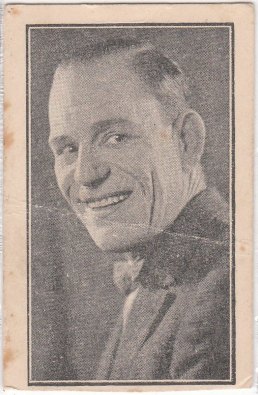 |
 |
 |
 |
 |
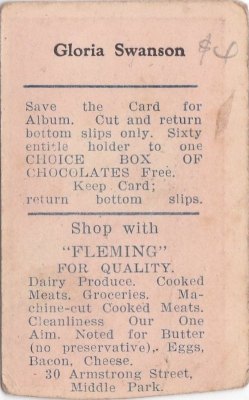 |
 |
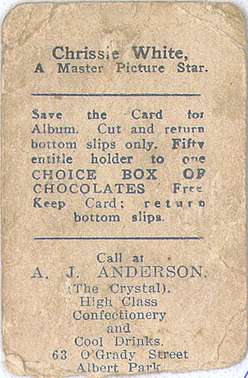 |
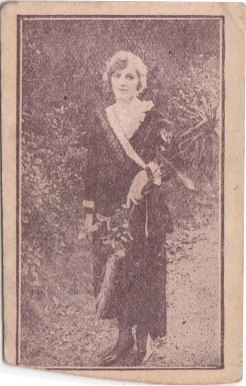 |
 |
 |
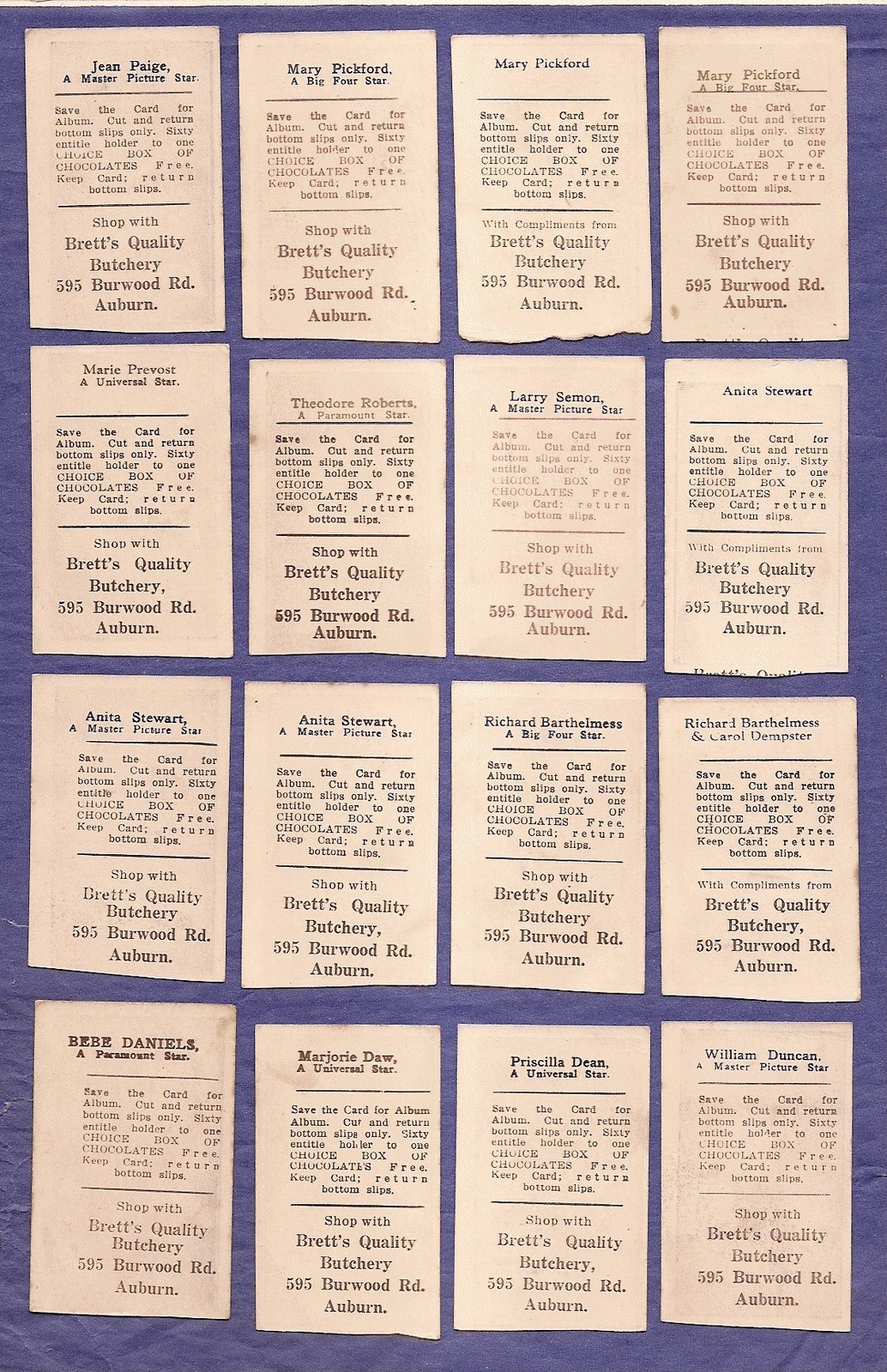 |
 |
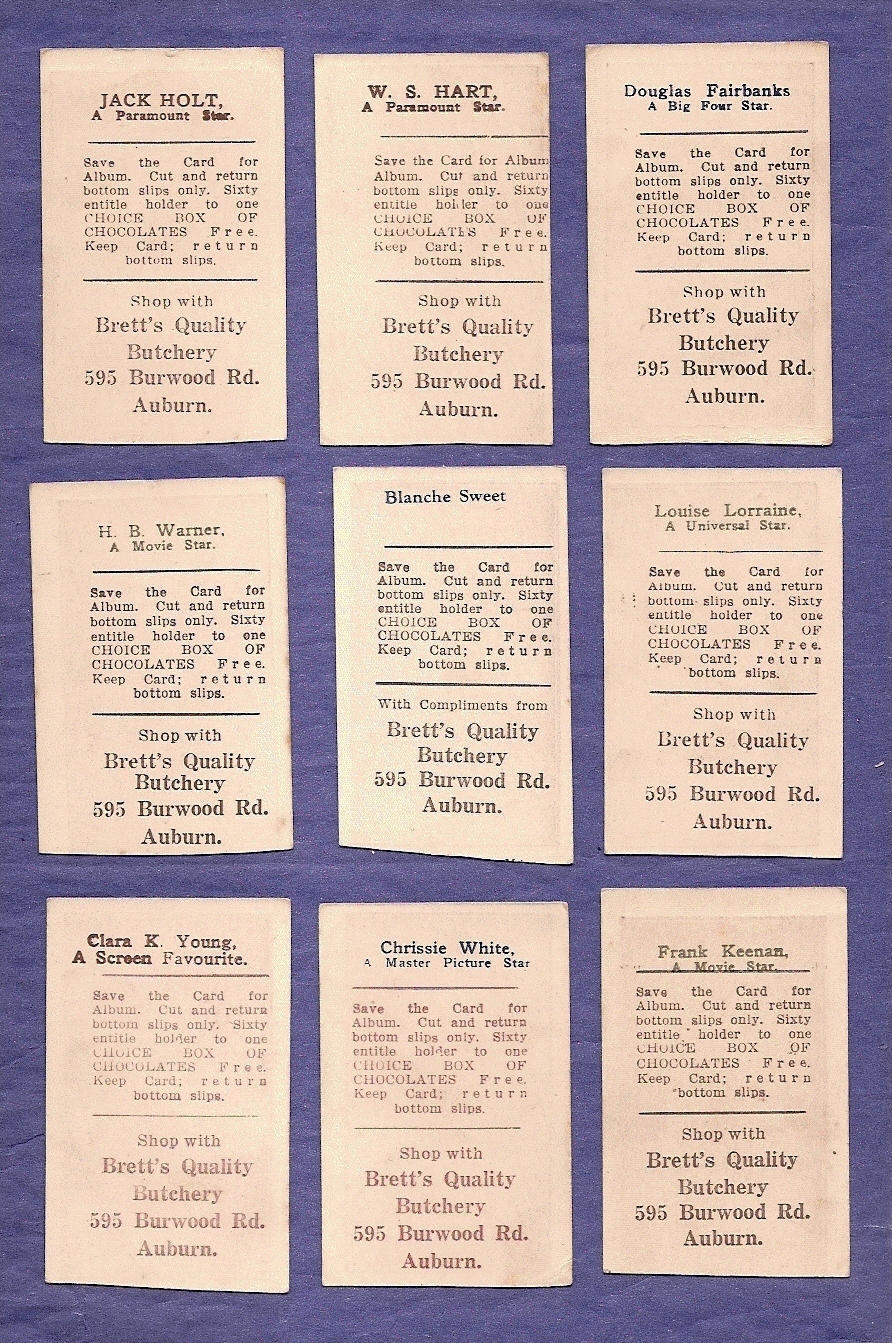 |
THE VICTORIAN PREMIUM SUBURBAN ISSUES
(THE UGLY DUCKLING CARDS OF THE 1920S)
THE FILM STARS
Much has been written about the V.P.S.I. Aussie Rules footballer cards and Australian Test cricketer cards, so it was thought it was about time the Film Star series cards were given the boost they so richly deserve, for, as we know, film star collecting has quite a following.
However, before we get into the details of the Film Star cards, a brief history of the V.P.S.I. cards will set the scene.
In the early 1920s, we think the cards were first issued in 1922; local shopkeepers and traders handed out cards with purchases. These cards had a "cut-off" coupon at the bottom and when a certain number (40, 50 or 60) of coupons were returned to the shop, the presenter would be rewarded with a "prize" of picture tickets, choice boxes of chocolates or "an acceptable gift". Due to the "premium" aspect to these cards, it is rare to find a card with the coupon still attached, most of the cards seen have had the coupon cut or torn off.
These card series bear the word "Victorian" in their adopted title, however, whilst the vast majority of them were issued in Victoria, there were at least a couple of sets of footballers issued by shop keepers in the Perth suburb of Subiaco and there may others yet to surface. The word "Suburban" in the series title is also a bit of a misnomer, as there is at least one set issued by a Geelong trader. To date only two Melbourne printing firms are known to have been involved in the production of the cards; these were "Star Picture Card Supply, 135 William St. Melbourne" and "E.Eyres, 553 Elizabeth St.", but it is not known if they were the entrepreneurs who sold the idea and arranged the prizes offered under the scheme. The bulk of the cards in the first series make no reference to the printer, but those that do were printed by the "Star Picture Card Supply" however, all but one of the cards I have in the second series, show as being printed by the "E.Eyres".
The cards themselves were printed on inferior cardboard, mainly in a plum colour as well as in black and white, the printing clarity was poor and many errors appear in the series, as was the case with the footballers. It appears the cards were printed in sheets and the local firms were invited (one assumes for a fee) to advertise their wares on the reverse of the card. Apart from the advertising aspect, the lure of getting a "prize" kept the kids coming back again and again to the same shop to amass enough coupons to claim their "prize". The range of shops involved in the scheme is quite extensive, with the school lolly-shop being the most prolific. Others being cash butchers, delicatessens, hairdressers/tobacconists, dairies (milk @ 5d (5c) a quart), fruiterers and newsagents just to name a few. Some issuers were quite entrepreneurial, one, "P.L. Green of Camberwell", appeared to dabble in just about anything, including real estate, fire, life and industrial insurance as well as being the agent for "Waterless Cookers". I find it a little difficult to see too many young school kids buying real estate or a waterless cooker, so I'm not sure how much business Mr. Green derived from his Film Star card advertising. At times I have come across cards with blank backs, which I have taken as coming from sheets of cards not sold and subsequently no merchant's name appeared thereon. One interesting card I was shown many years ago by one of our members, Barry Tassell, featured a rubber-stamped advertisement for "W. Taylor. Newsagent and Bookseller, 58 Eastern Rd, Sth Melbourne." This would seem to indicate that Mr Taylor minimized his costs by not having the cards printed and, as there was no attendant "Offer" of a gift or prize, it can assumed that he used the cards purely for advertising his business. Whilst we may never know how many different issuers there were, we do know that over two hundred have been seen and that is probably the tip of the iceberg.
It is not known exactly known how many cards there are in the two Film Star series, but we know of at least forty-eight different actors and actresses in the earlier series and some twenty-one subjects in the later series. The cards in the later series are easily identified as the name of the subject is captioned in script across the base of the picture.
The first series, although containing forty-eight known subjects, has so many varieties that, in some instances, one actor may have three different images, and then there is the multitude of individual issuers. The pedantic collector can go quite mad if he/she decides to collect all the different issuers as well as all the varieties. I know this for a fact.
The beauty of these cards is, like the footballers and cricketers; they were produced at a time when there was a scarcity of cards being issued, so they feature many actors/actresses that do not appear in other sets. We are, of course, speaking of the "silent era of the silver screen'. A small number became big stars and went onto bigger things in the later silent era and even into the sound era - names like; Charlie Chaplin, Gloria Swanson, Douglas Fairbanks, May Pickford, Erich von Strohein and Lon Chaney are quite familiar to us, however not too many of us have ever heard of Baby Peggy, Art Accord, Blanch Sweet, Hoot Gibson, Bessie Barriscale, Virginia Valli or Agnes Ayres. Many of the cards in the first series show, on the reverse, along with the name of the actor/actress, the name of the picture company they were contracted to: "Dorothy Dalton. A Paramount Star", "Richard Barthelsmess. A Big Four Star", "Priscilla Dean. A Universal Star: and "Mildred Harris Chaplin. A Master Picture Star". As cards in the second series only have the names of the subject on the front of the card, there are no references to the film companies showing on any of the cards in my collection.
I sub-headed the article "The Ugly Duckling Cards of the 1920s" and, to be honest, the cards themselves are ugly. As I said earlier, they are crudely printed on poor quality cardboard, are full of errors, and many are mutilated at the bottom, where a 1920s kid clumsily tore the coupon off, however, in spite of all this, I love them as they feature so many obscure film stars who I've not seen in any other series.
It would be impossible to list each subject and each issuer in an article such as this, but there is a comprehensive coverage of this intriguing series on Pages 314 to 321 in RB30 (The Grey Book) and Pages 242 to 253 in RB33 (The Blue Book).
Perhaps from the collectors' point of view, the best part is, unlike the ludicrous prices footballers and cricketers command, the Film Star cards are available at realistic and sensible prices.
The most exciting aspect of the "Premium Issues" series to the collector with an enquiring mind, is the knowledge that we are walking on unknown ground and the thrill of unearthing previously unseen or unrecorded material can still be experienced.
ERIC PANTHER. September 2016.
Victorian Premium Suburban Film Stars | Misc T-Z Sales List
Misc T-Z Checklists | Movie Card Website Front Page